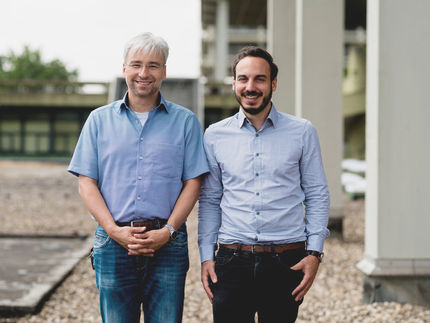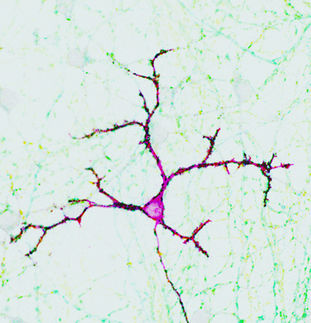Bioelectronics at the speed of life
Advertisement
Our nerve and muscle cells send signals to each other using ions and molecules. Certain substances, such as the neurotransmitter GABA (gamma aminobutyric acid), are important signal substances throughout the central nervous system. Eighteen months ago, researchers at the Laboratory of organic electronics demonstrated an ion pump which researchers at the Karolinska Institutet could use to reduce the sensation of pain in awake, freely-moving rats. The ion pump delivered GABA directly to the rat´s spinal cord. The news that researchers could deliver the body's own neurotransmitters garnered intense interest all over the world.

The pump beside a swedish coin, 10 Skr. The short distance that the ions need to be transported means that they can be delivered more rapidly than previously possible. Each outlet has been provided with a control electrode made from a conducting polymer, which means that they can be individually controlled. The control electrode together with another material forms an ion diode, which prevents leakage. (A diode conducts only in one direction.) The conducting polymer in the control electrode becomes charged with ions when the pump is switched off. The ions can be rapidly released when an electrical signal is received, in the same way that an action potential causes neurotransmitter to be released in a synapse. The operation can be repeated many times.
Photo Thor Balkhed/LiU
The research group at the Laboratory of Organic Electronics has now achieved another major advance and developed a significantly smaller and more rapid ion pump that transmits signals nearly as rapidly as the cells themselves, and with a precision on the scale of an individual cell.
"Our skilled doctoral students, Amanda Jonsson and Theresia Arbring Sjöström, have succeeded with the last important part of the puzzle in the development of the ion pump. When a signal passes between two synapses it takes 1-10 milliseconds, and we are now very close to the nervous system's own speed," says Magnus Berggren, professor of organic electronics and director of the Laboratory of Organic Electronics.
"We conclude that we have produced artificial nerves that can communicate seamlessly with the nervous system. After more than 10 years' research we have finally got all the parts of the puzzle in place," he says.
Amanda Jonsson, who together with Theresia Arbring Sjöström has developed the pain-alleviating ion pump as part of her doctoral studies. She proudly presents a glass disk with many of the new miniaturized ion pumps. Some pumps have only a single outlet, but others have six tiny point outlets.
"We can make them with several outlets, it's just as easy as making one. And all of the outlets can be individually controlled. Previously we could only transport ions horizontally and from all outputs at the same time. Now, however, we can deliver the ions vertically, which makes the distance they have to be transported as short as a micrometre," she explains.
All of the outputs of the ion pump can also be rapidly switched on or off with the aid of micrometre-sized ion diodes.
"The ions are released rapidly by an electrical signal, in the same way that the neurotransmitter is released in a synapse," says Theresia Arbring Sjöström.
Organic electronic components have a major advantage here: they can conduct both ions and electricity. In this case, the material PEDOT:PSS enables the electrical signals to be converted to chemical signals that the body understands.
The ion diode has recently been developed, as has the material that forms the basis of the new rapid ion pump.
"The new material makes it possible to build with a precision and reliability not possible in previous versions of the ion pump," says Daniel Simon.
The new ion pump has so far only been tested in the laboratory. The next step will be to test it with live cells and the researchers hope eventually to, for example alleviate pain, stop epileptic seizures, and reduce the symptoms of Parkinsons disease, using exactly the required dose at exactly the affected cells. Communication using the cell´s own language, and the cell´s own speed.
























































